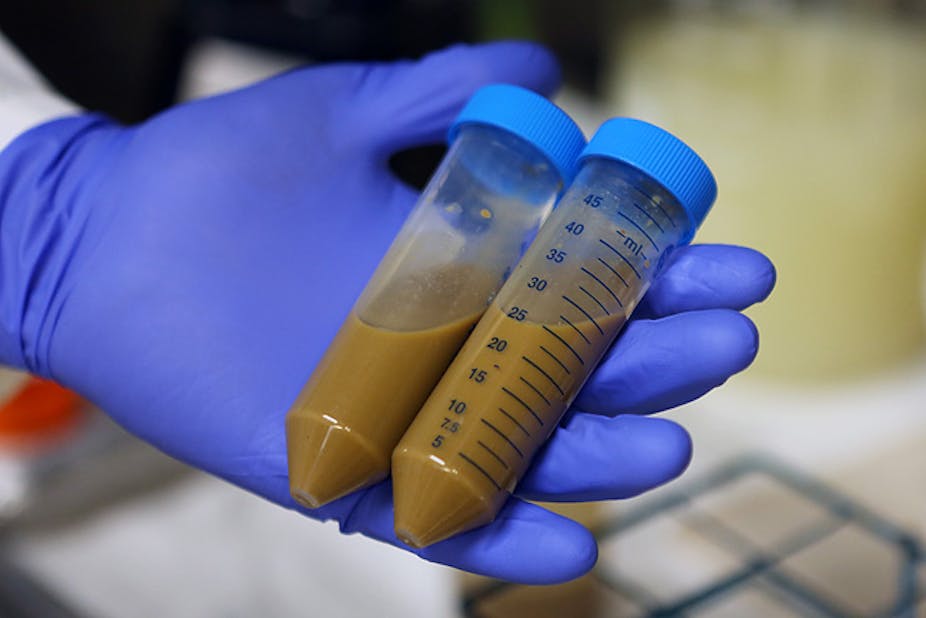The idea of faecal transplants was taken a step further in the recent story of Catherine Duff who, fed up with the crippling pains and diarrhoea caused by yet another C. difficile infection, decided to go DIY. She took a sample of her husband’s excrement, liquidised it in a kitchen blender and inserted it using an enema kit.
Faecal, or poo transplants as they are also known, involve introducing healthy faecal material from one person into another and can be an effective treatment for antibiotic-resistant bacteria. Alternatively, taking an oral capsule could be an alternative.

Duff is not alone and others have said they’ve used the treatment to help with conditions such as IBS. While many readers will find the idea alarming, for anyone familiar with the history of ancient medicine it sounds familiar. From ancient Egypt until at least the sixth century, dung was used as a remedy, both externally and internally. Along with urine, it formed part of the battery of materials used in treatment. While this could be human dung, more often it was from an animal or bird.
Ancient Greek medicine, often hailed as the precursor to Western practise, also featured excrement. Some scholars of ancient medicine have preferred to ignore this fact. For them, as for many readers of Duff’s story, the thought of using excrement, and perhaps more so someone’s else’s, is simply nauseating. But when it was used in the ancient world, it was for very different reasons. Most of the ancient Greek uses of dung come from the Hippocratic treatises on gynaecology, the Diseases of Women, dating from the fifth and fourth centuries BC.
Given that it is inescapable that dung is body waste, why the appeal and why gynaecology? It could be because in medical theories at the time, women’s bodies were thought to be threatened by any build-up of retained menstrual blood, which could become poisonous. To draw out something unpleasant, perhaps an equally unpleasant substance could be valuable.
But there is another possibility. The intention of many remedies for women’s diseases was to restore their fertility and enable them to conceive – so putting dung into their wombs could be seen as a sort of agricultural process, making the field (the womb) into a fertile place to receive the man’s seed. Numerous images of the womb as a field from classical literature support this suggestion. In the Athenian betrothal ceremony, cited in texts such as Menander’s play, Dyskolos, the father of the bride gives her “for the ploughing of legitimate children”. In a second century AD book on dream interpretation, for dreams that involved ploughing, “the ploughed earth is none other than the woman”. Dung was also used in cures for baldness, so again there is the idea of making something grow.
While human urine featured in remedies in the classical Greek medical treatises, when it came to excrement, it was always dung from birds or animals: hawks, pigeons, geese, goats, cows and others. But in the Roman world, human stools could also be used.

Galen, the hugely influential second century physician, mentions the therapeutic value of the faeces of a child who had only consumed lupines (a member of the pea family), bread and wine. He also suggested that some people were willing to try a boy’s urine as a cure for eye disease – although most would not. When human urine features, that of a beardless boy was favoured.
And this isn’t about the ancient world having a greater tolerance than we do towards the smell of excrement. In ancient Greece, dung could be delivered in a way that covered up any smell. Goose droppings, for example, could be crushed up into rose perfume. Galen said that most people would rather die than drink donkey urine. While he insisted that some animal dungs did not smell anywhere near as bad as people might have expected, he mentioned a special odour-free dog dung, from a dog who has only been fed on bones. It was white, and good for throat complaints.
Later medical writers of the Roman Empire sometimes recommended that physicians not tell their patient what was in the remedy they were handing out. If the remedy contained dung, it certainly seems like a good idea. And as faecal transplants take off as a treatment, maybe it remains so.

